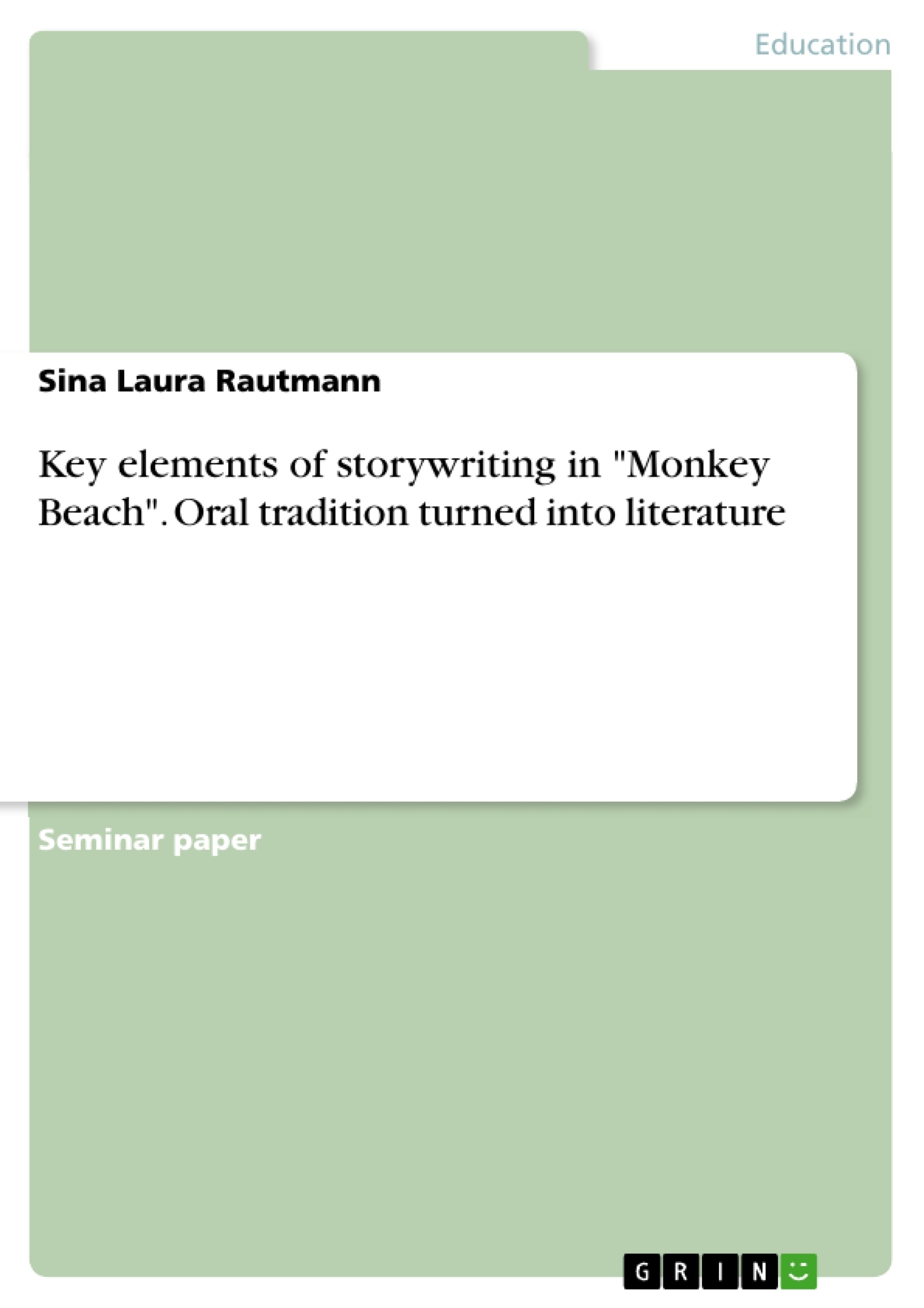Only very few people are used to storytelling for even fairy tales are written down and read out loud to children the same way over and over again without alteration.
Changing perspective to first nation tribes one can easily discover the importance that oral tradition and storytelling has to these people. It existed long before literature was introduced by the settlers in the post-colonial era. While contemporary Canadian fiction and short story writing developed in the middle of the nineteen-hundredth century, Native Canadian Writing was forced to create their own distinctive style of writing. By combining storytelling with literature the new genre of storywriting was created.
In this paper I will analyze the key features of storywriting and will exemplify them with quotes from the book Monkey Beach by Eden Robinson (2000). First I will present a short overview over the author and the book in general. Then I will give a brief overview about the main motifs, symbols and topics that the book deals with. In the main part of this paper I will present different quotes and show typical aspects for oral tradition that can be found within them.
Table of Contents
1 Introduction
2 About the Author and the Book
2.1 Eden Robinson
2.2 Monkey Beach
2.3 Main Topics and Motifs covered in the Book
3 Storywriting - Oral Tradition as a Written Style
3.1 Explicit and Implicit Stories of the Past (Legends/Lore)
3.2 The Meaning of Names
3.3 Wisdom, Teachings and Traditions passed on to the Younger Generation
4 Conclusion
5 Works Cited and Additional Resources
- Citar trabajo
- B.A. Sina Laura Rautmann (Autor), 2016, Key elements of storywriting in "Monkey Beach". Oral tradition turned into literature, Múnich, GRIN Verlag, https://www.grin.com/document/370038
-

-

-

-
¡Carge sus propios textos! Gane dinero y un iPhone X. -

-
¡Carge sus propios textos! Gane dinero y un iPhone X. -

-
¡Carge sus propios textos! Gane dinero y un iPhone X. -

-
¡Carge sus propios textos! Gane dinero y un iPhone X. -

-
¡Carge sus propios textos! Gane dinero y un iPhone X.

